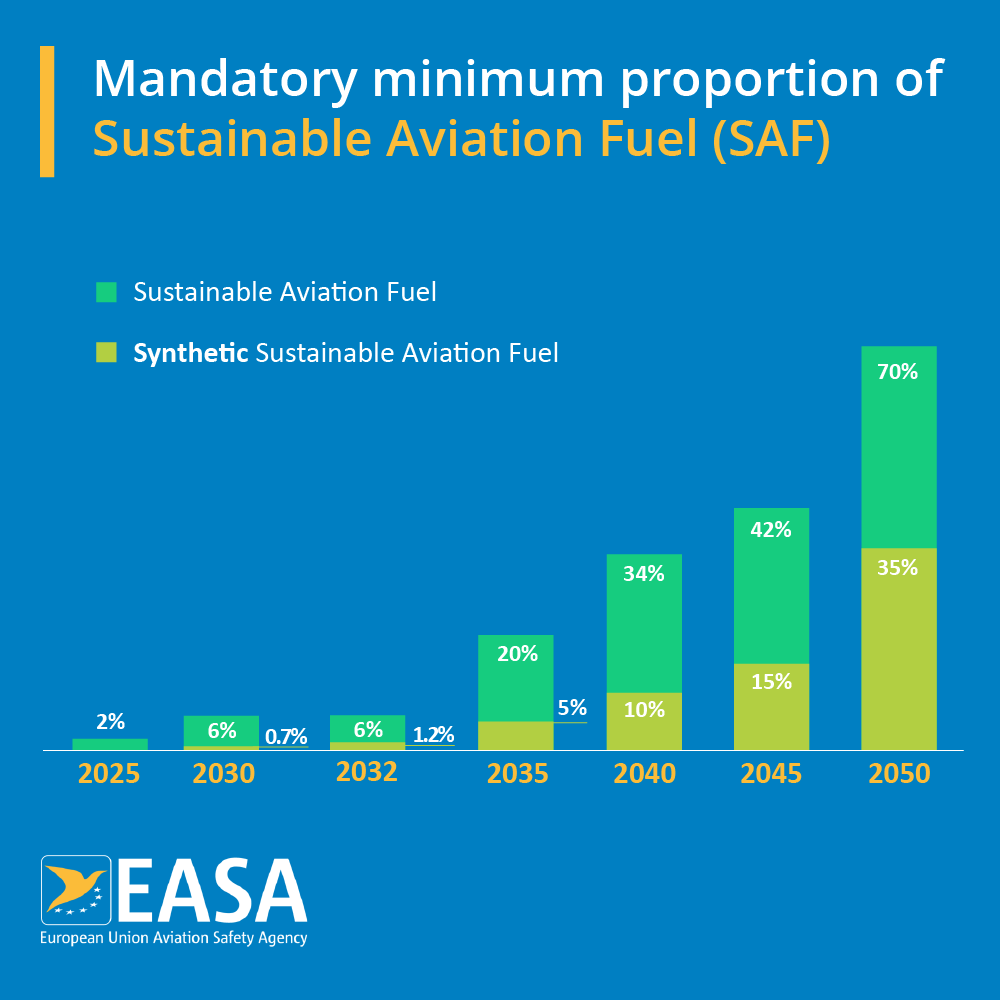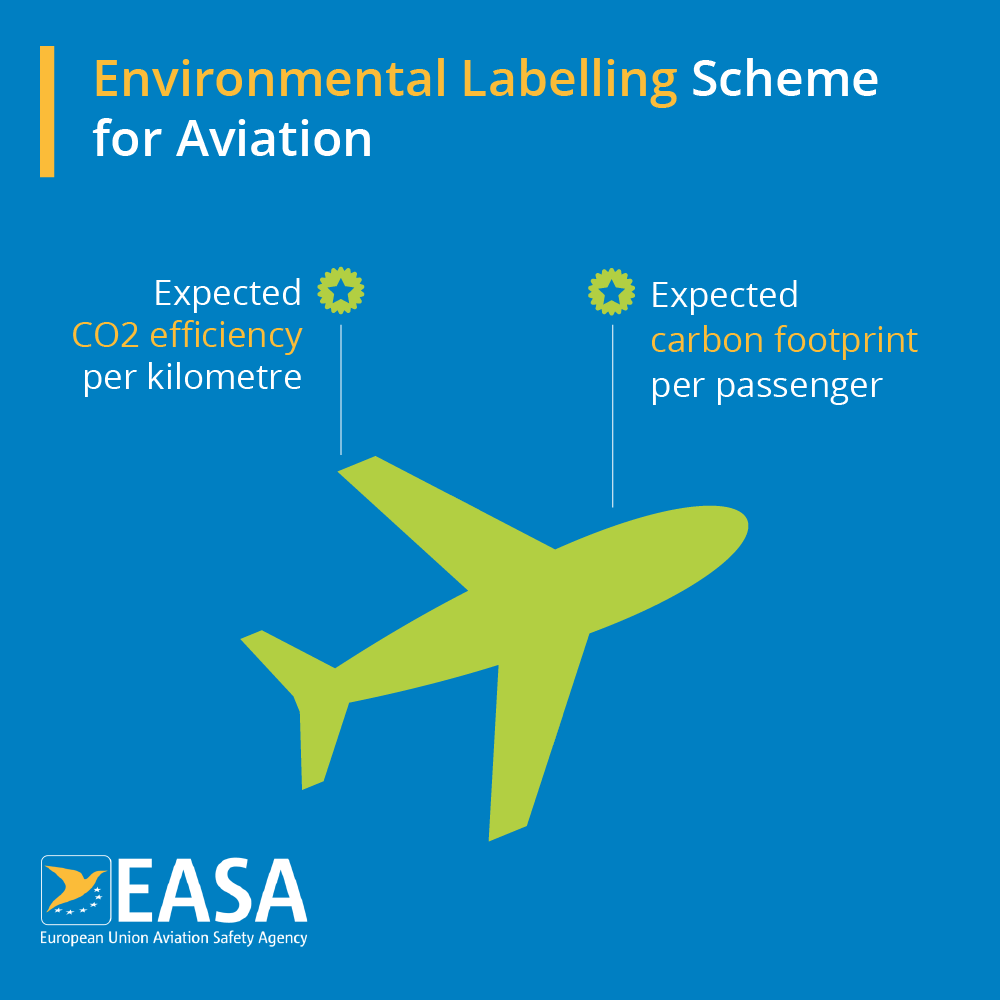The European Green Deal is a package of policy initiatives, which aims to set the EU on the path to a green transition, with the ultimate goal of reaching climate neutrality by 2050. It supports the transformation of the EU into a fair and prosperous society with a modern and competitive economy.
On September 13th, the European Parliament voted in favour of adopting the ReFuelEU Aviation regulation. This forms a key part of the Green Deal for the aviation industry. This article will provide a summary of the key aspects of ReFuelEU and provide you an understanding of what it means for the Commercial Air Transport domain.
Read the EASA Press Release here.
The ICAO Concept of “The Basket of Measures” – The different aspects of developed sustainable aviation
When it comes to aviation and particularly the role of aviation in supporting the European Green Deal, there are four key activities / areas where the global efforts are focussed. At global level, these are referred to by ICAO as the ‘basket of measures’. The first three are about reducing emissions and the final one is about offsetting emissions that are left. The ICAO basket of measures include:
Aircraft technology and standards
The advancement of aircraft technologies and designs that reduce emissions through new propulsion methods (such as electric, hybrid or hydrogen power), weight reductions, aerodynamic improvements and improved end of life recycling to name just a few. Think of this as what people fly in.
Air traffic management and operations
The second part involves our operational practices. Evolving how aircraft are operated to reduce emissions. There are lots of different aspects under this measure and we will have a more detailed article in the next Conversation Aviation magazine in October. It includes optimum en-route flight trajectories, turn-around and departure sequencing, APU use, taxi improvements, continuous descent arrivals and many others. Of course a key challenge here is to ensure safety is never compromised and this will require a constant industry-wide conversation. Think of this part as how we operate the aircraft and how the wider system interacts.
Sustainable Aviation Fuels (SAF)
The final measure to reduce emissions is the increased use of Sustainable Aviation Fuel (SAF) and this is the main area for this new ReFuelEU regulation. SAF is a biofuel used to power aircraft that has similar properties to normal aviation fuel but with a smaller carbon footprint. It is produced from sustainable resources including forestry, agricultural waste, used cooking oil, carbon captured from the air and green hydrogen. Think of this as what we power aircraft with.
Carbon Offsettting
The final measure is used to address remaining emissions following the application of the above in-sector measures. Through the Carbon Offsetting and Reduction Scheme for International Aviation (CORSIA), ICAO Member States have decided to implement the first global market based measures scheme in any sector/ industry.
ReFuel EU and the role of EASA
The new ReFuelEU Aviation regulation contributes to a high, uniform level of environmental protection of the sector while ensuring that the high level of aviation safety is maintained in the process.
There is a specific role for EASA, who is expected to perform tasks in monitoring and reporting on the use of SAF and Fossil Fuels by airlines in the main airports of the EASA Member States.
ReFuelEU plays the key role in developing a market for the production and supply of SAF across Europe. It looks to the 2050 horizon with the goal that 70% of all the fuel supplied in the Union Airports are SAF, out of which 35% would be synthetic aviation fuels, with a higher potential for reductions in CO2 emissions.

Additionally, EASA has been mandated with the development of an annual report that will provide the Agency and the European Institutions with more clarity on information such as the origin, quantity and characteristics of SAF purchased by airlines. The scope of the Regulation should cover at least 95% of total traffic departing from airports in the Union.
Environmental labelling to help passengers make more informed choices
Another part of the ReFuelEU regulation is a voluntary labelling scheme aiming to disclose emission information to passengers. The deployment of this scheme has been mandated to EASA. Passengers need to be able to make informed choices when comparing different flight options and choosing their flights, both for direct and indirect flights and with different operators. They also need to be able to trust the information airlines provide regarding the sustainability of fuel they use and the sustainability of their flights.
EASA will start issuing labels under the RefuelEU regulatory framework from 1st of January 2025. This will provide passengers with access to more robust, reliable, independent and harmonised information on the environmental impact of flights. The label incentivies the aviation industry to continually improve its sustainability performance.

Summary
The environmental challenges the aviation industry faces are real and both the “Basket of Measures” and specifically the ReFuelEU Regulation are key parts in helping ensure that our industry will have a bright and sustainable future.
Keep an eye open for more information on what effective environmental operations looks like in the next edition of Conversation Aviation, coming in the week of 9 October.
Please log in or sign up to comment.